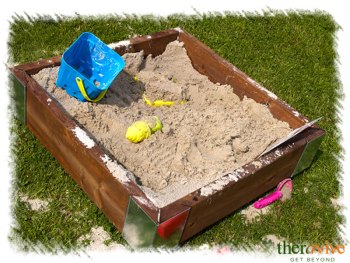 Throughout human history,
migration has been a fact of life. However, as a result of globalization, it currently
affects more people than ever before.
Amnesty International ("People on the
move", n.d.) reports that more than 230 million people live outside
their country of birth. That is about 3% of the world's global population. And
that number grows every day. Therefore, it is extremely important to focus
attention on psychological and psychosocial effects that immigration has on
individuals.
Throughout human history,
migration has been a fact of life. However, as a result of globalization, it currently
affects more people than ever before.
Amnesty International ("People on the
move", n.d.) reports that more than 230 million people live outside
their country of birth. That is about 3% of the world's global population. And
that number grows every day. Therefore, it is extremely important to focus
attention on psychological and psychosocial effects that immigration has on
individuals.
Who is Immigrating?
Psychologists
in the past have focused their attention almost exclusively on immigrating adults,
and have tended to present children as appendages to their parents rather than
as distinct subjects worthy of investigation (Sung, 1985). Therefore, a typical
immigrant was conceptualized as a young adult, who has been socialized in his
or her home country and then relocated to
another country. Little attention was given to children.
What About the Children?
Immigrant
children were often thought to be socialized in the new country. Thus, it was
thought that immigrant children generally have an easier time adapting than
adults because they are younger, more malleable, and more exposed to the new
culture through the school system in the new country (Chud, 1982).
However,
with time, it became obvious that information gained from research on immigrant
adults lack developmental perspective. Furthermore, Ashworth (1982, as cited
in Suárez-Orozco, Suárez-Orozco, &Qin-Hilliard,
2014) pointed out that children’s
immigration experiences vary greatly from
the experiences of immigrant adults. Immigrant children do not choose their
migration, and in some instances neither understand nor accept the reasons they
are given to justify their move to a new country. Because of that, more
researchers have sought to focus their
attention on immigrant children, and the impact that immigration can have on
their well-being.
How
Immigration Affects Child Well-Being?
UNICEF (2007) established six
dimensions of child well-being: material well-being, health and safety,
educational well-being, relationships, behaviour and risks, and subjective well-being.
There is no doubt that immigrant
children face different and various problems that can adversely affect their
well-being. Hernandez (2004) noted that the
socioeconomic background and family situation, problems of integration, language
difficulties, school segregation, the process of
selection of migrants, the level of
parents’ education and time since migration present crucial factors that affect
the education of migrated children. Furthermore, immigrant children are more likely to suffer from social
exclusion, often due to an inability to participate in economic, social, and
cultural life, and in some characteristics, alienation and distance from
mainstream society (Duffy, 1995).
According to
Mendoza, Javier, and Burgos (2007), health
of immigrant children is seriously threatened by stress
due to the loss of family, friends, and habitual surroundings. Also, if
children learn the foreign language faster than their parents, the latter will
urge children to communicate with the authorities; consequently imposing
pressure upon them. Furthermore, questions about their identity and sense of
belonging, the fear of deportation, and discrimination can cause problems and
that problem can be transferred into adulthood.
There is far more adversity that immigrant children might
face, and there are different variables (motivation for immigration,
socio-economic status, social support, sex, age, etc.) which may affect their
developmental experiences over time. Ironically,
studies have shown that majority of immigrant children are not maladjusted. In
fact, research show that there is
substantial heterogeneity of outcomes among immigrants and that there is the
so-called immigrant paradox: children of immigrants often fare better than
children of natives, even when they appear to face some disadvantages
(Washbrook, Waldfogel, Bradbury, Corak, & Ganghro, 2012). However, when
disorders do appear, they tend to manifest in two distinctive ways: as
behaviour disorders and identity disorders in adolescence (Aronowitz, 1948; as
cited in Suárez-Orozco et. al, 2014).
Therefore, we can conclude that
immigrant children do face difficulties when they move to a new country, but
most of them find ways to adjust. Our duty is to help them on their journey and keep their well-being at a
high level. Very useful tool in this fight for their well-being is play therapy because it can be used as a prevention and/or
intervention tool.
Why Play Therapy?
Play is the
"native language" of children. It presents an innate and universal
communication system, in which children communicate in a director symbolic way
(Landreth, 2002). In the play, there are
no cultural and/or language barriers.
For
almost 100 years, play has been used in play therapy. And, today, play therapy
presents recognized and practiced therapeutic alternative with children, for a
variety of issues.
Play
therapy provides a secure relationship between a therapist and a child, in
which the child can reach self-awareness, self-direction, and
self-healing ability and access the self-actualizing tendency (Ogawa, 2006).
Play therapy is also culturally responsive. The basic tenets of play therapy
are universal, however, careful
considerations and some modifications of play therapy can be incorporated in order to make therapists more
cross-culturally competent and responsive. These modifications could include:
building sensitivity, gaining knowledge responsibility,
and translating obtained knowledge into action (Gill, 2005).
Therefore,
it is apparent that there are many ways in which play therapy can help
immigrant children.
How
Will Play Therapy Benefit a Child?
Play therapy helps children to (Axline, 1948;
Costantino, Malgady, & Roger, 1986;
Garza& Barton, 2005, as cited in Ogawa, 2006; Reddy, Files-Hall, & Schaefer, 2005):
- feel less anxious
- have less externalizing behaviour
problems, such as aggressive behaviours
- comprehend better
- develop respect and
acceptance of self and others
- develop the ability to get beneath the
surface
- be more mature, feel better and more
adjusted
- develop new and creative solutions to problems
- learn how to experience and express
emotions
- learn new social skills and relational
skills with family.
The curative powers inherent in play are used in many
ways in play therapy. Therefore, it
is not possible to list all benefits of play therapy with immigrant children.
However, from the latter, it is evident
how important play therapy is and how it has a big potential to help children
to keep their well-being at a high level.
Conclusion
Working in a multicultural environment (http://www.archpsychological.com) and coming from a different cultural environment (Central Europe), made me recognize the importance of cultural sensitivity in therapy. From my personal experience, I can see how important it is for a therapist to develop cultural competence, and have seen what great results that can have in therapy with children.
It
is very important to highlight that play therapy is not only a treatment for
problems that occur, but also a useful tool that can prevent those problems
to ever show up. Therefore, every adult should be sensitive to needs that
children have and, if they think that a
child could benefit from play therapy, reach out and find someone who is able
to help. And, even though this seems like an easy and simple task, we have to
be aware of the difficult situation that parents of immigrant children face. The process of immigration is not easy, and can
easily overwhelm a person. So, it is really important that we all are sensitive
to the needs that children have. Especially professionals who work with children.
References:
Amnesty
International. (n.d.). People On The Move. Retrieved from
https://www.amnesty.org/en/what-we-do/people-on-the-move/?page=6
Chud, B. (1982). The threshold model: A conceptual framework for understanding
and assisting children of immigrants. In R. C. Nann (Ed.), Uprooting
and Survivin: Adaptation and Resettlement of Migrant Families and
Children (pp. 95-100). Dordrecht Holland:
Reidel Publishing.
Duffy, K. (1995). Social Exclusion and human dignity in Europe.
Strasbourg, France : Council of Europe.
Gil,
E. (2005). From sensitivity to competence in working across cultures. In E.
Gil. & A. Drewes (Eds.), Cultural
issues in play therapy (pp. 3-25). New York, NY: The Guilford Press.
Hernandez, D. (2004). Demographic
change and the life circumstances of immigrant families. The Future of Children, 14,
17‐48.
Landreth,
G. L. (2002). Play therapy: The art of
the relationship. Bristrl, PA:
Accelerated Development.
Mendoza, F. S., J. R. Javier, & Burgos, A. E.
(2007). Health of Children in Immigrant
Families. In J. E. Lansford, K. Deater‐Deckard, & M. H. Bornstein (Eds.), Immigrant Families in Contemporary Society (pp.
30-50). New York, NY: The Guilford Press.
Reddy, L., Files-Hall,
T., & Schaefer, C.E. (2005). Empirically
Based Play Interventions for Children. Washington, DC: American
Psychological Association.
Suárez-Orozco,
M. M., Suárez-Orozco, S., &Qin-Hilliard,
D. (2014). The New Immigrant and the American Family:
Interdisciplinary Perspectives on the New Immigration: 4. London, UK: Routledge Chapman
Hall.
Sung,
B. L. (1985). Bi-cultural Conflicts in Chinese Immigrant Children. Journal of
Comparative Family Studies, 2, 255-269.
UNICEF (2007). Child Poverty in Perspective: An overview of child well‐being
in rich countries – A comprehensive assessment of the lives and well‐being
and adolescents in the economically advanced nations. Florence, Italy: Innocenti Research Centre.
Washbrook, E.,
Waldfogel,J., Bradbury, B., Corak, M., &Ganghro, A. A. (2012). The Development
of Young Children of Immigrants in Australia, Canada, the
United Kingdom, and the United States. Child
Development, 83(5), 1591–1607.
About the Author

Hilda Huj
, B.A., M.A. Hilda is a registered clinical counselling and forensic psychologist in Edmonton, Alberta. She specializes in working with youth, adults and families that have been impacted by trauma. She completed a Bachelor of Arts and Master of Arts degree in Psychology in Osijek, Croatia, and subsequently equated her academic credentials to Canadian standards. Currently, she volunteers with the Edmonton Police Services as a Victim Support Worker and also helps to promote Psychology by volunteering for the Psychologists’ Association of Alberta.
Office Location:
Suite 39, 9912 - 106 Street
Edmonton, Alberta
T5K 1C5
Canada
Phone: 7804289223
Contact Hilda Huj
Professional Website:
www.archpsychological.com